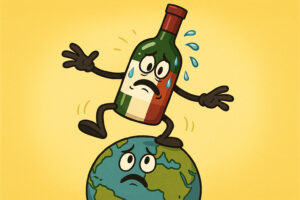
From the production of wine and oil, from Apulia to Sicily, passing through Latium, to the tradition of Balsamic Vinegar of Modena, from the Confetti of Sulmona to the egg pasta of the Marche, from the chocolate of Piedmont to the Pasta of Gragnano, from the Licorice Factory in Calabria to the Peperone Crusco and honey of Basilicata, from the fishing of the Gambero Rosso and the Sicilian Pastry Art, but also of Sardinia, passing through the Hydroponic Crops of the Federico II University of Naples. The traditions and poetry of Italian food are the absolute protagonists of Expo 2020 Dubai (October 1, 2021 - March 31, 2022), the first Universal Exposition in the Arab world, delayed by one year due to the pandemic, where “Italian Know-How” will be the theme of the Italian Pavilion, born from an idea of artistic director Davide Rampello and narrated in a film by Oscar-winning director Gabriele Salvatores, with Indiana Productions, dedicated to the artisan and manufacturing arts of agribusiness, mechanics, design and the use of the most sophisticated technologies, in other words, the Made in Italy that the world envies, of the 15 partner regions that are at the center of the exhibition (Abruzzo, Basilicata, Calabria, Campania, Emilia Romagna, Friuli Venezia Giulia, Lazio, Liguria, Marche, Piedmont, Puglia, Sardinia, Sicily, Umbria and Veneto, the highest number brought to an Expo). A narrative of Italian beauty, under the claim “Beauty unites people”, which also passes through the landscapes and art, from the Langhe to the Prosecco Hills, up to Etna.
“When Davide Rampello spoke to me about his idea, the “Italian Know-How”, Pier Paolo Pasolini immediately came to mind - explains the director of films that have marked the history of Italian cinema such as “Mediterraneo” and “Io non ho paura” - because in his writings on Italy, Italian culture, our traditions and nostalgia for the loss of work in the countryside, of knowing how to do things with one's hands, he often spoke of the fact that our country is very much based on working with nature. Its assets are knowing how to cultivate, how to cook and how to build. It's true that we are an industrial country, but our tradition must remain in knowing how to make bread, for example. I thought about the fact that men make things through their hands, and about a beautiful work by the photographer Sebastião Salgado called “The Hand of Man”, and the first images that “appeared” to me in the film are the hands, but also the faces and details of the work. We decided to shoot the film with this aspect in mind, trying to convey through the images the scent of wheat and flour and the atmosphere of working in a factory, and we found ourselves traveling in this country that is constantly changing and within a few kilometers it's like finding ourselves in another place, even with another culture, another cuisine, sometimes another language. And this, which could be a problem, turns out to be a great advantage, because there is no other country in the world with such a variety of important things to see and taste. Food is definitely one of the most important things for Italy. Shooting in black and white gave the film an almost sacred image, iconic and different from the colorful world we live in, placing it outside of time. Director Wim Wenders used to say that black and white is more fantastic than color, for this very reason. In the same way we chose to stay tight on what is being done: you see the environments and places where people work, but above all what they are doing in a very minimal way. From the women in Piedmont who, all together, make Tajarin and Ravioli del plin, to the mechanics of super-technological machines, from those who make the forcole of gondolas in Venice to the glassmakers of Murano, passing through the cultivation of wheat in the South. I myself have discovered wonderful things that I didn't know, and I've fallen even more in love with our country. If we were more proud and aware of our abilities, we would probably all be better off”.
The story, built by Salvatores with the Regions, will be visible at the Italian Pavilion, in the “Belvedere” with 360° projections of the most evocative Italian landscapes, and with the “Italian Know-How”, told on a 100 square meter screen and capable of showing visitors the best of Made in Italy craftsmanship.
Copyright © 2000/2025
Contatti: info@winenews.it
Seguici anche su Twitter: @WineNewsIt
Seguici anche su Facebook: @winenewsit
Questo articolo è tratto dall'archivio di WineNews - Tutti i diritti riservati - Copyright © 2000/2025